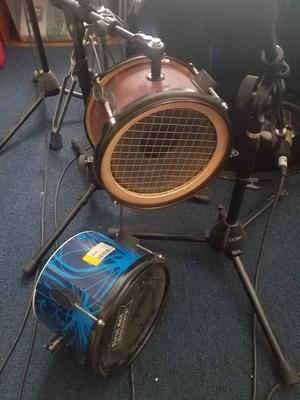buildafriend said:
I was told to take a PA sub frequency driver and to wire it in reverse into a DI. The idea was to catch the ULF spectrum and then combine it with the normal kick mic signal. It's a nice big diaphragm..
However, the VLF response is not so great, because the mechanical resonance of a speaker is much more significant than in a microphone, where intensive damping is used to linearize the fequency response.
The efficiency of a loudspeaker-as-a-mic is so great, due to the large diaphragm's area, that the signal's amplitude allows all sorts of processing, in particular EQing to death in order to extract VLF information.
Using loudspeakers as mics for kick drums is old; at Barclay Studios, in the 70's, there were coffee-machine discussions about just doing that, because someone heard it was done in some English studios.
It seems the origin was with some experiments by Peter J. Baxandall, who produced a paper on the subject (AES Library:
Loudspeakers as High-Quality Microphones). If I understand well his intro (
The work described here started several years ago, merely as the result of idle curiosity - what sort of equalization would be required for good-quality results, how good would the quality turn out to be, and what would the signal-to-noise ratio be like?) and conclusions (
When a first-rate loudspeaker is used as a microphone in the above manner, it is found that speech quality fully up to the standards of the best studio microphones is obtainable. This does not mean, however, that such results will be obtained in more normal circumstances of use, with off-axis sound sources and reverberant surroundings - indeed an ordinary loudspeaker must be regarded as a rather poor microphone when its directional characteristics are taken into account. Nevertheless it is on the whole surprising what very geed musical quality can be obtained, especially under stereo conditions, when the direct sound sources can be arranged to be more-or-less on axis for one or other of the two "microphones".)
I believe that's the reason why he didn't pursue.
Personally, I'm not very interested in those so-called "sub-kicks", since all information below 40Hz is garbage used to shake your trouser's legs while you're under the influence of E-bombs.




